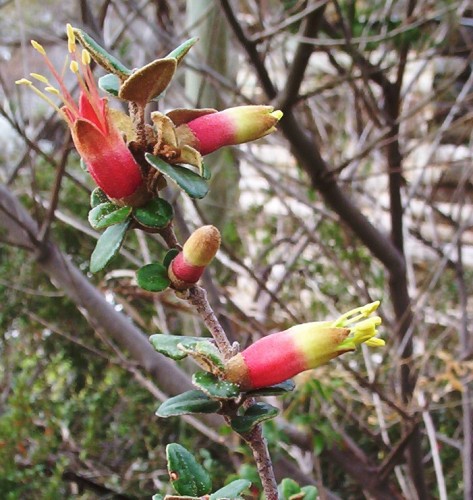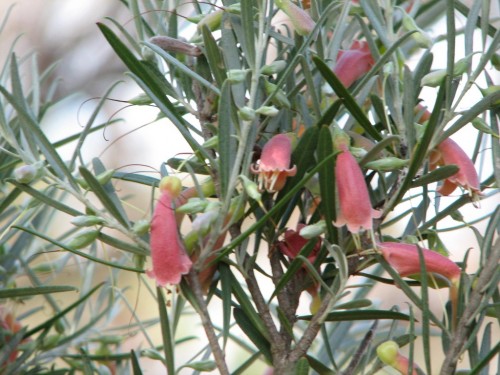Hardy Correas
Correa reflexa is my favourite Correa because of the many different forms that can be found. They all tend to be tolerant of dry positions and some are suitable for coastal planting. In general they prefer shade for at least part of the day.
Most of these varieties are known by their original geographical location if they have some distinctive feature. Like Correa reflexa ‘Sellicks Beach’ mentioned here. This immediately indicates that it would be a good plant for coastal planting.
I have a few different forms of Correa reflexa. This one I always assumed was a hybrid with Correa decumbens which has tubular flowers that point upwards. Once I had taken more notice of the forms of plants I realised that what I had was another form of Correa reflexa. The leaves were different to others and the flower shape and colour was different.Drought Proofing Our Gardens 1
How do we drought proof our gardens? How do we manage the plants we have so that they can remain reasonable looking in a time where water restrictions make it difficult?
There are some actions that I want to take over these next few weeks with my own plants.
Common Names For Australian Native Plants
I had an email today giving the new site for the ASGAP (Association of Societies for Growing Australian Plants) Web site. One item of news interested me. There is now a site where one can track down Australian native plants by their common name. Some people are critical of the use of scientific names for plants but often there is no choice because there is no recognised common name.
Australian Plants Common Name Database
Posted at 6:42 PM, 27 October 2006 by Brian Walters
One of the complaints often levelled at growers of Australian native plants is that they seem to insist on referring to plants by their confusing scientific names. Sometimes there is no choice. Many plants just don’t have accepted common names and in other cases, the same common name can refer to several different plants (‘native fuschia’, for example can refer to Epacris impressa, Correa reflexa or Eremophila maculata, depending on who you’re talking to).Still, urging people to grow Archirhodomyrtus beckleri is not likely to result in increased nursery sales of that plant, whereas, recommending ‘rose myrtle’ might. So, perhaps we should use common names more often.
The Australian Plant Common Name Database can help with this – it can track down common names for a wide range of Australian plants. The database works in both directions; ie. you can enter a common name to find out its scientific name or vice versa. It also works at the generic level. For example, enter “Banksia” and the database will return all the common names for the various Banksia species.
Definitely a very useful resource.
Germination of Seed During Winter
I have been quite surprised at the number of species which will germinate in the winter. I thought I had actually lost the seeds as they were put in so late. It is amazing that chilling actually will stimulate germination. At the moment I have a packet of Callitris canescens (preissii subspecies canescens, I think) in the freezer. They will be sown later this week. It is the first time I have tried this technique for germinating seed so it will be interesting to see what happens.
The Hardenbergia violacea, a lovely royal purple form that is quite bushy rather than a scrambler or climber, are ready bto pot on this week. Some of the other pea flowers are nearly ready also. Unfortunately I lost the Sturt Desert Peas and will need to try again, perhaps at the end of August.
Plant Photos Due Soon
At long last IT Whiz Son is in the process of helping me to put photos on the blog 😀 . He also showed me how to do these Smileys!
I offered the inducement, with tongue in cheek, of a chocolate cake by snail mail as a huge hint that I would like this. I was feeling envious of some of the lovely photos I was seeing on other blogs.
I hope to put occasional relevant photos on the posts particularly of plants flowering in the relevant season. For example many Hakeas and Eremophilas are coming into flower in the district. I am also trying to put together a collection of photos of local species in flower. Most of what I have is on 35mm film. I need to learn the art of dealing with scanned photos too until I am able to get some digital photos.
The trick is to have the photos of a size that does not take forever to download. Son feels he has achieved this.


